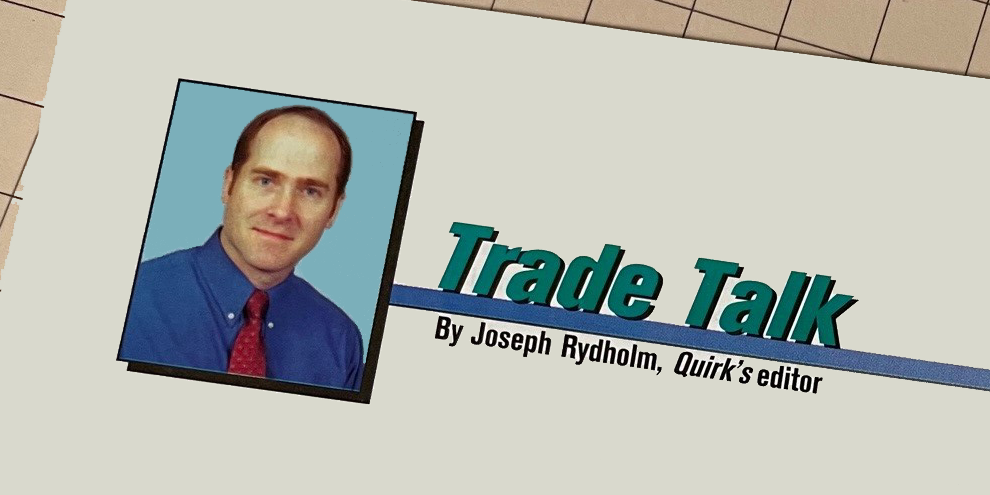Last fall, the European Society for Opinion and Marketing Research (ESOMAR) published an eight-page document highlighting the results of its SPEAR 2 project. SPEAR (Screening Possible Evolutions Affecting Research) is the fruit of discussions between an assemblage of client-side people and research providers who meet to examine the issues affecting the global research industry. Most of the participants are based in Europe, but the group does include people from the U.S., South America and Asia.
In general, the SPEAR 2 report (copies are available at www.esomar.nl.) covers familiar territory but one topic that stood out for me is the image of the researcher, both self-image and how customers (in-house and client-side) see them. Industry organizations have for years spoken of the need to change the perception that researchers are "mere" gatherers of data. Marketing research is, after all, more than just tabulating responses. It involves analysis and interpretation.
That effort is ongoing. Despite the seemingly overwhelming evidence that research works, its worth is still questioned daily.
Those who doubt its value have probably had bad experiences with it. They’ve either found it useless or, on a more personal level, research may have been responsible for killing a pet project of theirs, making them forever resentful.
Now, not all research is good research. The cliché of the research report that sits on a shelf gathering dust isn’t a concoction of anti-research forces. It’s a reality. Sometimes research is a waste of money, whether due to poor planning and execution or the simple fact that no one acts on the findings.
How do you avoid useless research and prove your worth? Along with gathering valid, solid data, the researcher’s job also includes selling the value of that data, interpreting it, developing ways to act on it. The obstacles facing the well-intentioned would-be analyst in this case are myriad. Your company’s structure may render your input moot (perhaps all you’re allowed to do is gather and submit the data and leave the analysis and action to "upper management"), or it may be politically difficult/impossible for you to offer up your opinions.
But you still have to try. It all comes down to communication, which is, as we all know, a two-way thing. The SPEAR 2 report notes, "In a number of cases, researchers do not really understand what clients really want to know. This could result in demand for [the] wrong kind of research. In other cases the marketing researcher knows too little of the client’s market to profoundly understand the formulated questions. This also can lead to confusion or even mistakes. This is another demonstration of the fact that researchers are not always aware of the company and decision-making processes of their clients. In other cases communication is extensive but simply at the wrong time. For example, during the final presentation of the research results, a discussion evolves which only then provides a clear image of the questions that are important to the client. An internal client is also often unaware of all the background information that led to the quest for research."
You are the question formulator, but some of the most important questions you come up with may not be the ones that end up on a survey form. They’re the ones you ask your clients to find out what they need from the marketing research you’re conducting for them. Answers to those questions can be just as valuable as anything you get from the audience you’re researching.
* * *
In news on the home front, QMRR’s Webmeister Dan Quirk has made some changes to our Web site
(www.quirks.com) that I think you’ll find useful.
- In the Article Archive section, where you can access hundreds of past Quirk’s articles from 1992-1999 in a searchable database free of charge, when you find an article you’d like to share with a friend or colleague, you can now e-mail that person a link to the article. In addition, the articles are now available in a more easily printable form.
- Folks who post a message in our Researcher Forum will now be automatically notified by e-mail when someone has responded to their original message.
- If you’d like to submit a press release to me via the Web site, that process is now easier, thanks to the newly-added ability to attach a document instead of/in addition to typing the information into a text box.
- And those of you looking for new jobs or seeking job-takers will find our Job Mart easier to use. The Mart has been reorganized to simplify the process of posting a resume or job opening. In addition, openings are now sortable by location and date of posting to make finding that new dream job easier than ever. And best of all, it’s free!
We’ll have more changes and new features in the coming months. Watch this space for more information or, better yet, just stop by the site on a regular basis!
